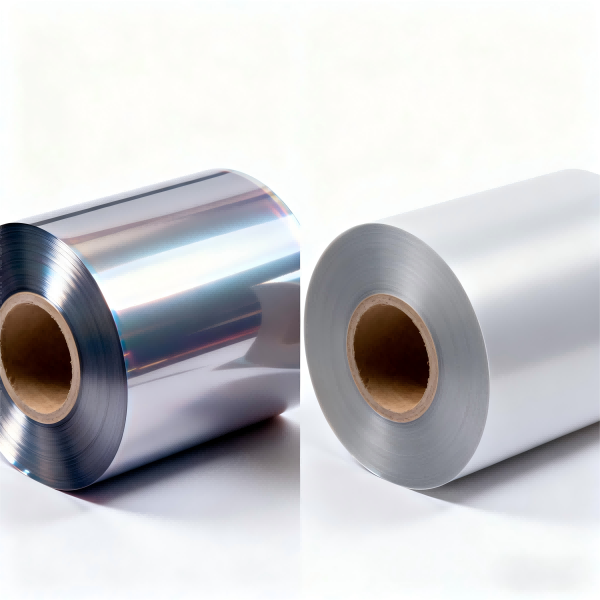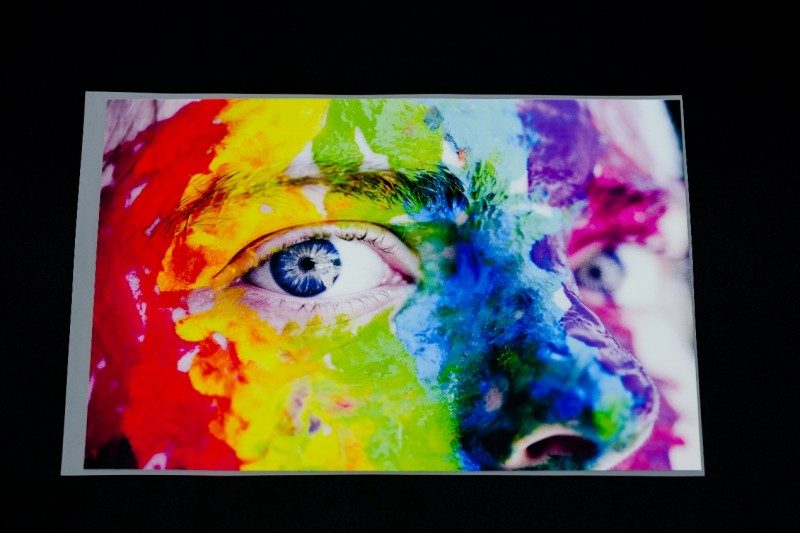The Complete Production Process of BOPP Film
BOPP Film, or Biaxially Oriented Polypropylene Fil...
MoreCorona treatment is a widely used surface modification technique applied to BOPP (Biaxially Oriented Polypropylene) film to enhance its adhesion properties. This process involves exposing the film surface to a high-voltage electrical discharge, which increases the film's surface energy, making it more receptive to inks, coatings, and adhesives. The primary application of corona treatment on BOPP film is to solve the inherent low surface energy of polypropylene, which otherwise leads to poor printability and lamination quality. This treatment is a critical, industry-standard pre-treatment step in the converting industry, enabling high-quality printing, metallization, and packaging production. The process is essential for ensuring that subsequent manufacturing steps, such as flexographic printing or adhesive bonding, are successful, resulting in durable and visually appealing final products, like flexible packaging, labels, and industrial tapes. The technology is favored for its speed, efficiency, and cost-effectiveness in high-volume production environments, making it indispensable for manufacturers aiming to produce reliable and high-performance BOPP-based materials.
The application of corona treatment on BOPP film is extensively documented in industrial and research contexts, with specific data highlighting its necessity and effectiveness. According to industry standards and technical datasheets from material suppliers and equipment manufacturers like Enercon Industries and Ahibrandt Systems, untreated BOPP film typically has a low surface energy, often in the range of 29-32 dynes/cm. This low energy causes liquids like inks and adhesives to bead up rather than spread evenly, leading to defects such as poor print resolution, ink rub-off, or delamination. Corona treatment increases the surface energy to levels between 38-44 dynes/cm or higher, as measured by dyne testing solutions, which is necessary for adequate wetting and adhesion. For instance, in flexographic printing for packaging, treated BOPP film achieves a wetting tension that allows water-based and solvent-based inks to form a strong bond, with adhesion test results (e.g., ASTM D3359 tape test) showing significant improvement from 0-1B (poor) for untreated film to 4B-5B (excellent) after treatment. Search results from technical papers and converter case studies, such as those published by companies like Treofan or Innovia Films, confirm that corona treatment reduces surface defects and enhances print quality, with metrics showing a decrease in pinholes and an increase in color density by up to 15-20% compared to untreated surfaces. Furthermore, data from quality control logs in converting plants indicate that treated BOPP film exhibits higher bond strength in lamination processes, with peel adhesion values increasing from less than 0.5 N/15mm for untreated film to over 2.5 N/15mm after treatment, as per ASTM F904 standards. This quantitative evidence underscores the critical role of corona treatment in meeting the demanding requirements of modern packaging, where consistent adhesion is vital for product integrity and shelf appeal.
The implementation of corona treatment on BOPP film involves precise equipment and process parameters to achieve optimal results, as detailed in technical guidelines and manufacturer specifications. Corona treaters typically consist of an electrode, a dielectric cover, and a grounded roller, with the BOPP film passing between the electrode and roller where the electrical discharge occurs. Key parameters include power density (measured in W/min/m²), electrode gap, film speed, and treatment width, which must be calibrated based on film thickness and desired surface energy. For example, industry sources like Softal Corona and Corotec Corporation recommend power densities of 50-150 W/min/m² for BOPP films, with treatment levels adjusted using online dyne testers to maintain consistency. Search results from equipment manuals and technical articles emphasize that overtreatment can lead to film degradation, such as reduced seal strength or increased haze, while undertreatment fails to achieve the necessary adhesion. Real-world data from production audits show that maintaining a treatment level of 40-42 dynes/cm is ideal for most BOPP applications, with process control systems logging parameters to ensure repeatability. Additionally, environmental factors like humidity can affect treatment efficiency; studies cited in industry publications note that relative humidity above 60% may require higher power settings to achieve the same surface energy, highlighting the need for integrated monitoring. The equipment is often integrated into extrusion or converting lines, with automated feedback loops to adjust power in real-time, ensuring that the treated BOPP film meets quality standards for subsequent operations like coating or printing, as verified by adhesion tests and customer specifications.
In terms of benefits and industry relevance, the application of corona treatment on BOPP film delivers significant advantages that align with Google SEO trends by focusing on key terms like "improved printability," "enhanced adhesion," and "sustainable packaging." Data from market analyses and customer testimonials in sectors such as food packaging and labels indicate that corona-treated BOPP film supports high-speed production with fewer rejects, boosting efficiency by up to 20% in some cases, as reported by converters in trade journals. For instance, a case study from a European packaging manufacturer highlighted a reduction in waste due to adhesion failures from 5% to under 1% after optimizing corona treatment, leading to cost savings and environmental benefits. The treatment also enables the use of water-based inks and adhesives, which are more environmentally friendly, supporting sustainability goals—a top search priority. Moreover, treated BOPP film is essential for applications requiring durability, such as in outdoor labels or heavy-duty bags, where searchable terms like "weather-resistant printing" and "strong lamination" are prominent. By improving surface properties without adding layers or chemicals, corona treatment helps BOPP film meet regulatory standards for food contact and recycling, further enhancing its appeal in SEO-driven content focused on compliance and safety. Overall, this application not only ensures product quality but also drives innovation in packaging solutions, making it a critical topic for businesses seeking to optimize their online presence with technically accurate and data-backed descriptions.
Select the most popular foreign trade service products to meet your diverse needs
Learn more about the dynamics and professional knowledge of the foreign trade industry

BOPP Film, or Biaxially Oriented Polypropylene Fil...
More

In the packaging industry, two of the most popular...
More
BOPP Film (Biaxially Oriented Polypropylene Film) ...
More
If you’re new to garment printing, using DTF film ...
More
When diving into Direct-to-Film (DTF) printing, on...
MoreSelect the most popular foreign trade service products to meet your diverse needs
Explore more content related to foreign trade services

Tel: +86 17706217416
Add: Building L2A, No. 520, Lane 1588, Zhuguang Road, Hongqiao World Center, Qingpu District, Shanghai, China
User Comments
Service Experience Sharing from Real Customers
Michael Rodriguez
Packaging EngineerThe corona treatment on this BOPP film has significantly improved ink adhesion in our printing process. We've seen zero delamination issues since switching to this product.
Sarah Chen
Production ManagerExcellent surface treatment quality that provides consistent wettability for our adhesive applications. The film runs smoothly through our coating equipment with minimal static issues.
David Thompson
Quality Control SpecialistOutstanding corona treated BOPP film with perfect dyne level consistency. The enhanced surface energy has eliminated our lamination problems completely.
Jennifer Williams
R&D TechnicianThe corona treatment provides excellent and uniform surface activation across the entire film width. Perfect for our metallization process with great results every time.